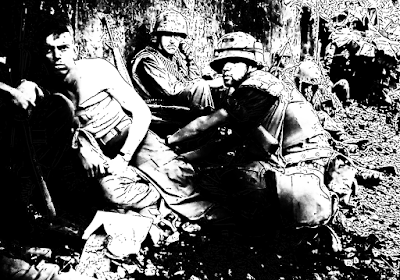Conflict: Stoppage

One of the troublesome parts of any game is counting consumables, whether ammunition, food, torches, spells or whatever. In normal circumstances this can be handwaved, since the party is not out long enough to use up all their ammunition and other consumables, and can resupply. For example, one study [ lengthy pdf , but interesting] of police shootings found, Officers involved in gunfights fired, on average, 7.6 rounds, compared with an average of 3.5 for officers who fired against subjects who did not return fire. Between 1998 and 2006, the average hit rate was 18 percent for gunfights. Between 1998 and 2006, the average hit rate in situations in which fire was not returned was 30 percent. Thus in any encounter, modern police officers are typically firing off less than a single magazine. In reality the officer who shoots a suspect is spending the next several months dealing with the legal fallout of it all. But in a typical game setting where they go out on the beat again tomorrow,



